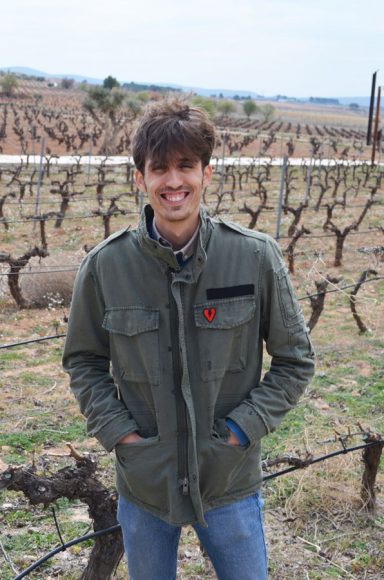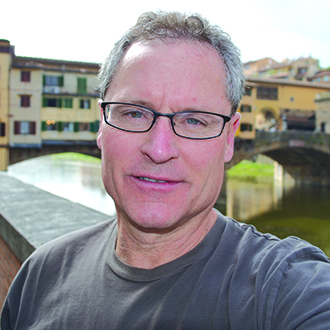The email started like this: “Hello Doug, On behalf of the DO (Denominación de Origen) Utiel Requena, we are extending an invitation to visit the region.” Well, I guess I had some homework to do, because I had not yet heard of this Spanish wine region. As it turns out, seven journalists from across the United States were invited to participate in this inaugural wine media trip specific to Utiel-Requena, in the province of Valencia. More media trips are in the works involving other export markets, as they should be. It is a wine region composed of nine towns, Utiel and Requena being the largest. Utiel-Requena has been quietly making wines for 2,700 years as evidenced by discovered documents, wine amphorae, stone presses, grape seeds and other carbon-dated items related to wine production.
Most of the region’s wine production has been consumed locally or has been used to blend with other wines from outside. As in many wine regions, longtime producers and newly minted makers from other occupations are on a mission to make and promote better wines. Bobal is the grape that defines the region, representing more than 80 % of the vines planted in 34,000 hectares (84,000 acres). It was heavily planted in the early 1900s, largely because it grew well in local soils, needed very little vineyard manipulation and made sturdy, thick-skinned tannic grape clusters that withstand drought, big rains, insects and disease. Bobal shows a great balance between acidity and potential alcohol with the thick skins contributing brilliant color to the wine.
As in other regions of the wine world, recent major improvements include better pruning techniques designed to reduce yields to make a more flavorful grape, moving toward or fully embracing sustainable or organic vineyard practices, understanding optimum harvest times, employing better winery techniques, including modern-day cleanliness and proper yeast selections for the best fermentation of that particular grape type. And, as in other regions of Spain, there is a quality designation on the bottle that means something. I have been to regions of the world where a winemaker can call his wine a Grand Riserva, which essentially means “This is my best effort.” In Spain, the terms Crianza, Riserva and Grand Riserva each carry with it quality of fruit requirements and different minimum oak aging times with many producers exceeding the minimum aging requirements.
The Utiel-Requena region has both Continental and Mediterranean influences, meaning the heat and soils of the mainland are tempered by cool breezes from the sea. This allows for an extended hang time of the grapes, which helps to contribute flavor, color, depth and complexity. Red Grapes grown locally are Tempranillo, Garnacha, Cabernet Sauvivgnon, Merlot, Syrah, Pinot Noir, Petit Verdot and Cabernet Franc. For whites you will find Macabeo, Chardonnay, Sauvignon Blanc and Verdejo, alongside relatively unknown regional grapes, Merserguera, Tardana and Parellada.
More than 6,000 families and 100 wineries are regionally active in grape growing and winemaking. This is an indication of the number of grape growers contributing their harvest to local cooperatives, which have the winemaking equipment necessary to bring wine to market. As the regional wines become better known and growers seek to create wines from bud to bottle, these numbers will inevitably change. We had the opportunity to meet and taste the wines of Clos de San Juan, a project of the Valsangiacomo family that involves marrying old vines with Bobal grapes. The Valsangiacomo family is new to the area with a long history of winemaking. We met Marta Valsangiacomo, the young matriarch of the family. She told me over lunch, “We came to the area to make wine and explored our options. We found a winemaking cooperative and entered into a deal to rent first with an option to buy, which we have now done.” They have a small hotel nearing completion. And they still employ all the growers from the cooperative days. Next year, they expect to earn their organic wine certification. And the wines are wonderful.
The Pago Chozas Carrascal winery was initiated by the parents of Julián López Peidro, who came to the wine world with euros from a successful cosmetics business. Julian was installed as the winemaker and visionary to grow three white grape and eight red grape varieties. This custom-built bodegas produces 200,000 bottles per year, along with a very flavorful and light peppery olive oil. It is certified organic and its Bobals show a spiciness and freshness with hints of balsamic and an earthiness akin to forest floor. Dominio de la Vega is another multigenerational winery, situated in an 18th-century château on the Santiago de Compostela, the Christian pilgrimage route that has the city of the same name – home of the Cathedral of St. James the Great – has its destination. We tasted Dominio’s Bobal wines from 2006, 2012 and 2016 and all were full-bodied, showing dark fruit with spiciness, cinnamon, aromatics and the lusciousness of ripe Bobal.
Several of the wines we tried are currently in the U.S., while some producers are looking for importers. I’m not sure how available any of these wines are in local stores but I would bet some of the bigger stores have or could find a Bobal or two for you to try. One producer told me, young and underripe Bobal tends to have a ripe Pinot Noir quality. I found the fully ripe Bobal to show a combination of flavors and mouthfeel of Cabernet Sauvignon and Merlot with a touch of Monastrel. Bobal is big and full of ripe dark fruit flavors. It is structured and layerd with a long finish. Look for it. Ask for it. It’s Boba-luscious. And Boba-licious.
Write me at doug@dougpaulding.com.


